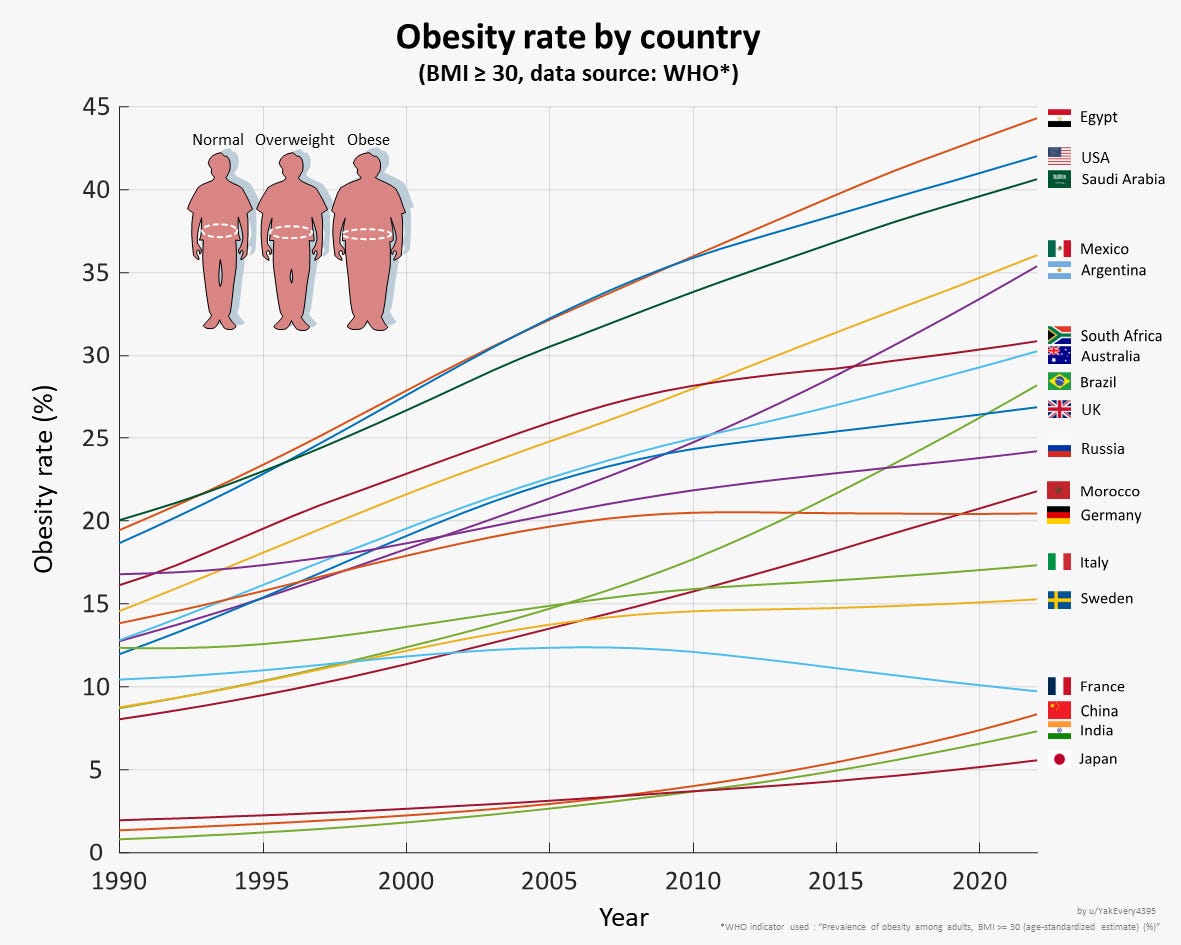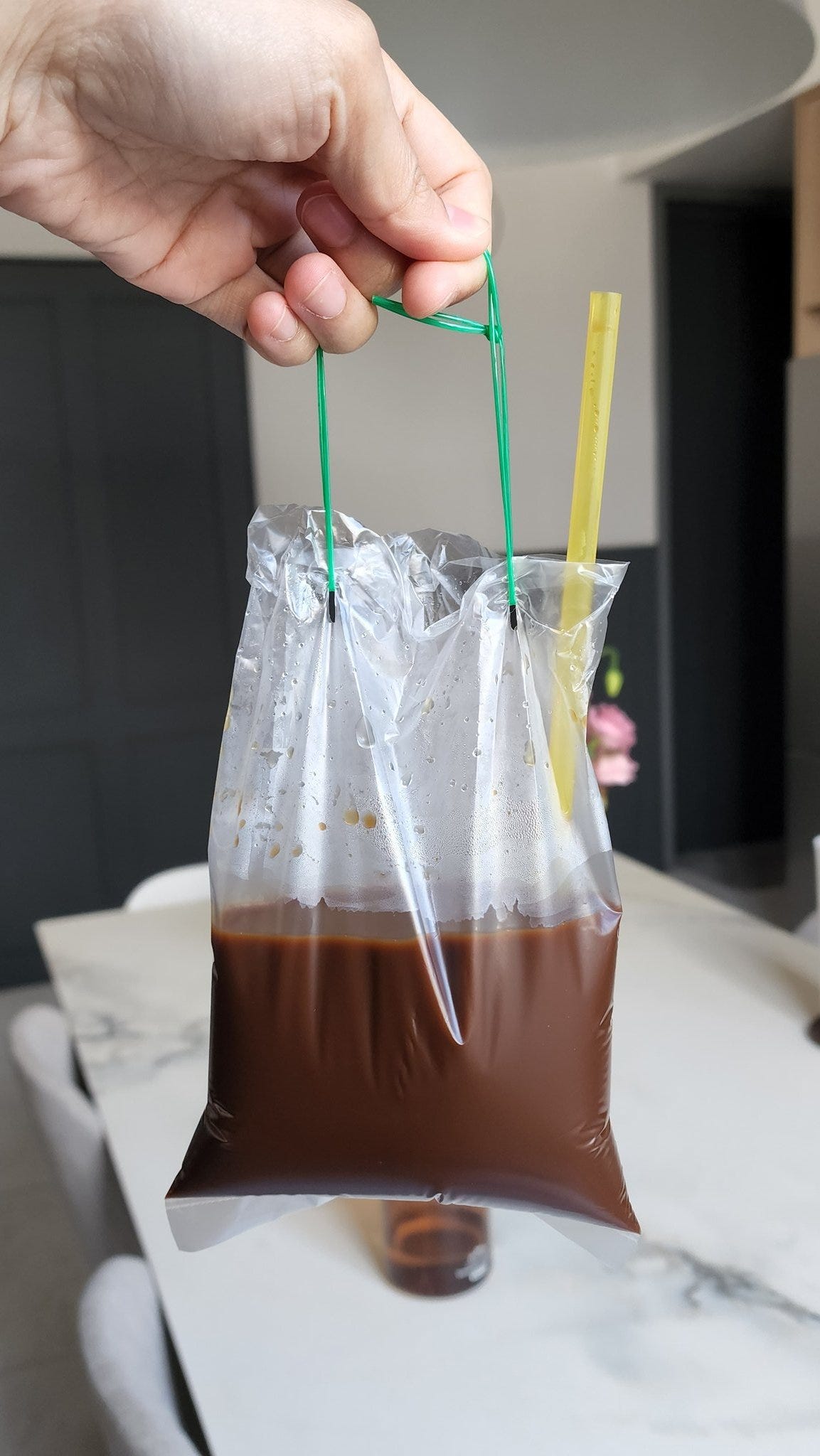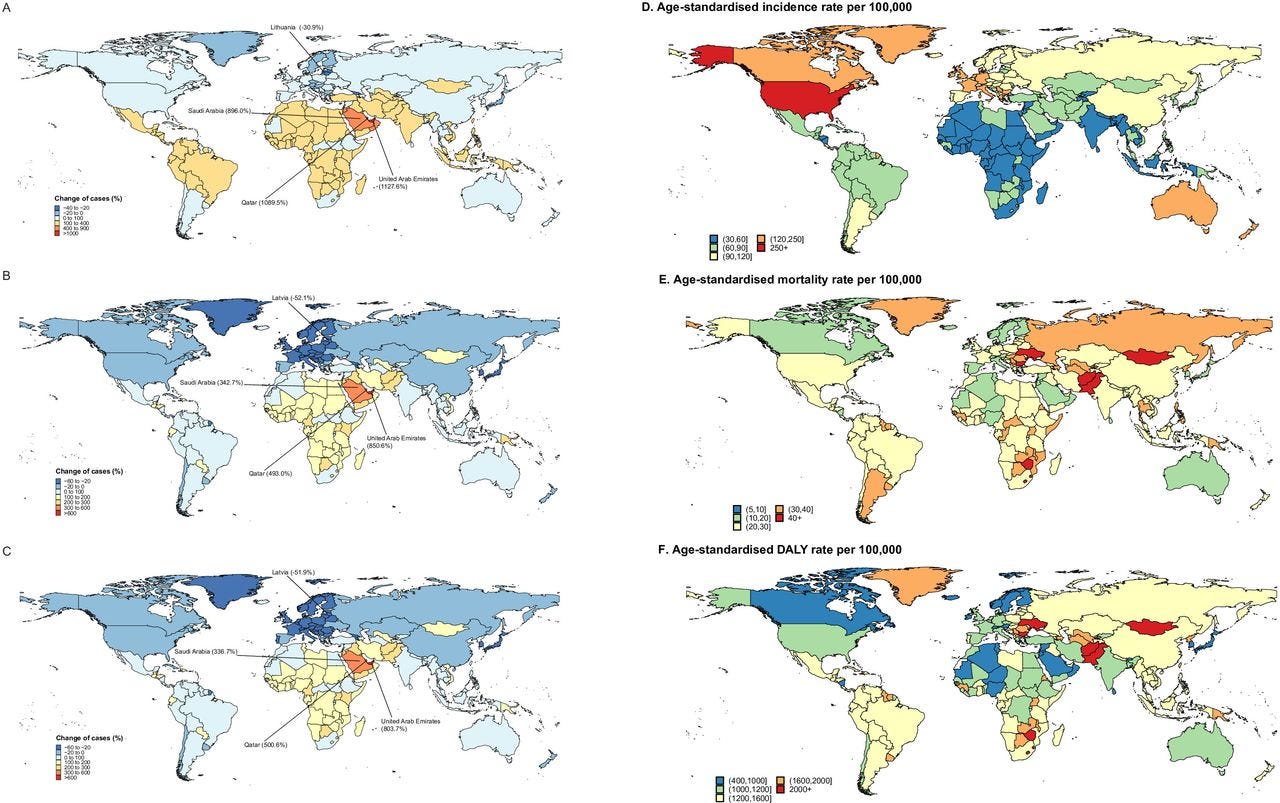Why do millennials seem to get a lot more cancer than previous generations?
Where I share my own attempt at piecing together what we know about this, which is probably more obvious and less influencer-friendly than people would like.
A study came out in 2024 that the risk of getting 17 cancers has increased significantly with birth year. For example, The small intestine cancer rate for adults born in 1990 was almost four times as high as it was for those born in 1955. Another study found a 79% increase in global early-onset cancer on the background of an only 40% increase in population. There are more studies: One with a breakdown by country, and this one looking only at Northern Ireland. This is a large percentage increase on a very, very small number so there is no reason to panic just yet. And thankfully, survival rates have increased a lot, so cancer deaths are still going down1, but nevertheless, this looks like something we should study more. Right now, we don’t really know why this is happening, as one of the studies linked above points out:
Evidence suggests an aetiological [causative] role of risk factor exposures in early life and young adulthood. Since the mid-20th century, substantial multigenerational changes in the exposome [environment] have occurred (including in diet, lifestyle, obesity, environment and the microbiome), all of which might interact with genomic and/or genetic susceptibilities. However, the effects of individual exposures remain largely unknown.
What could be the most important of these individual exposures? And what can an individual do about them? When we see something like increased cancer rates under millennials it is important to realize that doesn’t mean “people just like you”. If all millennials who like pineapple on pizza also started snorting asbestos, the cancer rate would go up. But if you are not in that group, your risk of getting cancer would not change. So, ideally we can identify some behaviors that people are doing more of, that we can then choose to avoid. Well, if you like wine and Negronis, you’re not going to like the first one.
One well documented carcinogen is alcohol. The International Agency for Research on Cancer (IARC) classifies alcohol as a Group 1 carcinogen. Group 1 simply means strong evidence exists for a causal relationship to cancer. Other Group 1 carcinogens are tobacco, asbestos, certain viruses and sunlight2. It is indeed true that alcohol use has increased, and millennials are the heaviest drinkers in history.
Research question: Is early onset cancer rate still increasing among non-drinkers and light drinkers? I wasn’t able to find studies who researched this. AI told me this study showed an increase even in non-drinkers, but it actually doesn’t. It only shows a (very strong) correlation between increased alcohol consumption and early onset cancer, but we knew that already. Bummer.
Another major contributor is probably obesity and sedentary lifestyles. In almost every country in the world, obesity rates have seriously increased in the last 30 years.
There is some good evidence that exercise is protective against cancer, and even improves survival rates and reduces recurrence of cancer in cancer survivors. No wonder that Derek Thompson here calls Exercise a Wonder Drug. My favorite Substack medical writer, Gregory Katz, is a bit more cautious, writing:
Nevertheless, there is abundant proof that exercise is the single-most important thing an individual can do to protect themselves from disease and promote longevity. If I personally had to make a gut-feel call, I would bet that lower exercise levels and too much food are probably the top causes of the increase.
Cutting back alcohol is a pretty obvious one as well, and many of us who drink know that we should cut back a bit. Alcohol use has increased by a lot over the decades, and so has obesity. Therefore, together they might very well explain the majority of the increase in early onset cancer.
But that is not a very Instagramable outcome. There are some buzzy reasons that are more influencer friendly, although they are probably much smaller causes. But still, we can’t rule them out as potential contributors: microplastics, food additives, microbiome issues, red meat consumption, too much sugar, not enough fruit, etc. It is notoriously almost impossible to research these kinds of weaker connections (we still don’t know what the healthiest diet is or how low your cholesterol should be, or even if the fact that eggs are high in cholesterol means your cholesterol level goes up if you eat them). But, still, There are viable research ideas for some of these in my opinion, and some studies have been done:
A study that followed 70,000 French people from 2009 to 2016 and found a 25% lower cancer risk in people who eat organic food more often.
For sugar, all studies point to obesity and metabolic disease as the real cause. If you eat a lot of sugar but also burn it all off with lots of exercise, it does not seem to cause any issues (sugar is not a poison per se, but being obese is very, very bad for your health, and excessive sugar intake is bad for genetically predisposed people, maybe3).
Microplastics are trendy right now, with acid rain kind of panic levels. Currently, we don’t know much yet:
Microplastics are being found in more and more places, but that is also because we’ve started looking for them a lot harder and with more sensitive instruments.
There is no evidence for any causative relationship between microplastic exposure and disease. This puzzles me. It should be possible to do similar studies as the one above with the French people and organic food (noting that this will take 7-10 years). Simply by selecting large enough groups and correcting for major co-variables (like exercise and diet) should give some answers. Or we could compare countries that differ strongly in their exposure to microplastics. I’ve found no such studies so far.
What we do know is that microplastic exposure has increased a lot since the 90s. And it is indeed not equally distributed among countries. Southeast Asia ranks highest in terms of microplastic ingestion, while China and Mongolia are hotspots for inhaled microplastics.
Mechanisms have been proposed for how microplastics would cause cancer. But they are complex and indirect. Microplastics might not cause cancer, but they could be a carrier for things that do, like heavy metals. Or maybe microplastics mimic hormones and over time could cause cancer because of hormone imbalances. Some evidence has been found for these ideas, but only in reaction tubes (in-vitro), and some in animals. A viral study showed that microplastics accumulate in certain organs in mice and found some acute harm. But the mice study didn’t find (or look for) long term harm or cancer. No studies have been done with humans so far.
I find it very unsurprising that Southeast Asia ranks so high in microplastic consumption. While in my home we stopped putting any food in plastic containers except maybe for a few hours for a picnic, many people in SEA are drinking hot coffee like this:
So, if this would cause a big increase in early-onset cancer, countries in SEA should start having different health outcomes because of microplastics, including higher cancer rates. But they don’t…
So as boring as it is, I have no choice but to bring up the infamous Dutch stereotype of the Yogasnuiver; Vegans who obsess with living clean during the week, only to spend their weekend binge drinking and snorting cocaine (snuiven). They are obviously doing a form of performance art. Not really being serious about their health.
As much as I generally hate arguments that are structured like: “there is no point doing X if you’re not doing Y”. In this case, it seems clear that it’s healthier to drink water from a plastic cup than vodka from a glass, and healthier to drink from a plastic water bottle while exercising than sipping from a fancy metal bottle while scrolling Insta on the couch.
On the other hand, I do actually think it’s obviously a good idea to take some simple steps like reducing plastic food containers at home, not heating anything up in plastic, and avoiding drinks in plastic bottles4. On the diet front: eating more organic foods and generally eat food, not too much, mostly plants. But exercising more should be the number one priority to prevent cancer, followed (sadly) by drinking less alcohol.
Last but not least, could we invent technology and processes to create plastic-free food? Apparently, yes. I found Seatopia, which claims to farm fish that are completely plastic free. That’s pretty neat! Technology, yay!
This is thanks to improvements in screening, chemo drugs, and treatment protocols.
It only says something about the strength of evidence for the causal connection, not about the severity. Asbestos and tobacco are obviously significantly more powerful carcinogens than alcohol and sunlight.
This is about the real but poorly understood "metabolically unhealthy, normal weight" (MUHNW) or "non-obese metabolic syndrome". Again though; more exercise, a diet lower in both saturated fat and simple carbs (sugars), higher vegetable intake (eat food, not too much, mostly plants) is widely accepted to prevent or reverse this.
As a religious Pareto Principle believer, I have spent quite some time already trying to work out how the 80/20 rule applies to reducing plastic exposure, i.e. with which 20% intervention effort can you drive an 80% reduction in exposure. I have found it impossible to find any data breaking down microplastic ingestion in humans by source. There is data breaking down microplastic presence in the environment by source, but that is not the data we’re looking for. Going by those numbers, it seems like staying away from roads with cars (inhaling tire particles) and not wearing synthetic clothes (inhaling again) would reduce exposure by 63% already. Generally not living in a city would cover 87%. But this data does not include ingested plastic from food containers at all. That is relatively easy to avoid (for affluent people), but is it a large share of total plastic intake for a human? No data…
Then there is fish and meat, and fruits like Apples, which are all full of plastic. But what percentage of a human’s plastic exposure comes from eating those things? No data…
And how should you trade-off getting those heart-protecting omega-3s from fatty fish vs eating the microplastics in the same fish? No data…





